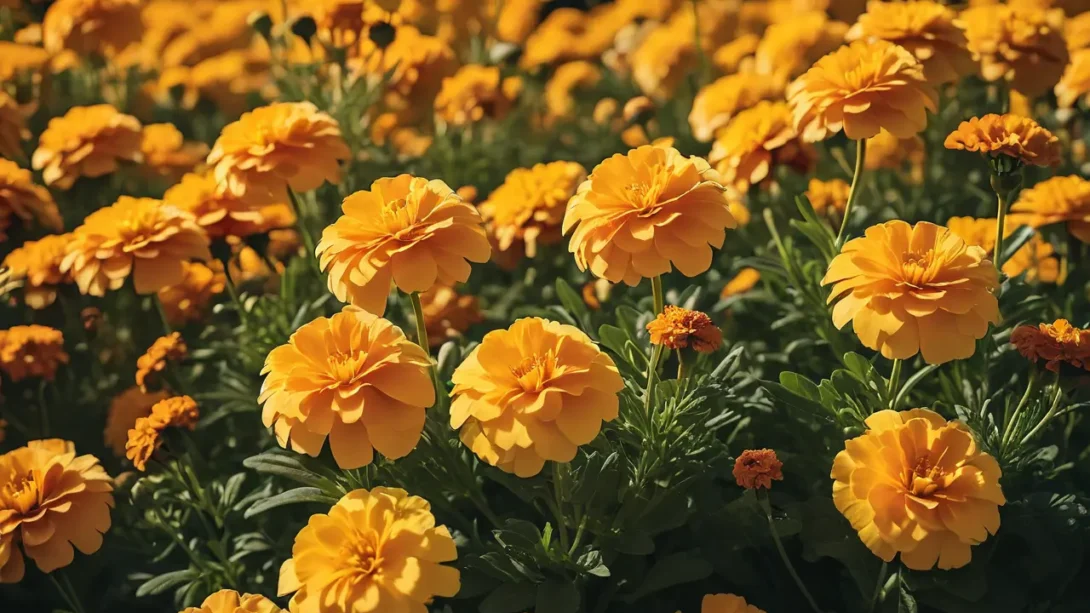Marigolds, with their cheerful blooms and easy maintenance, are beloved staples in many gardens. However, witnessing the gradual decline of these vibrant flowers can be disheartening for any gardener. If your marigolds are showing signs of distress, such as wilting leaves or stunted growth, fear not – there’s hope for revival. By delving into the common reasons behind marigold decline and implementing targeted solutions, you can breathe new life into your garden and restore your marigolds to their former glory.
Needs of Marigolds
Before we dive into troubleshooting, it’s essential to understand the basic requirements of marigolds. These resilient plants thrive in full sunlight and well-drained soil. While they’re relatively drought-tolerant once established, they still require regular watering, especially during hot, dry spells. Additionally, marigolds are relatively low-maintenance, but they’re not immune to pests, diseases, and environmental stressors. With this foundation in mind, let’s explore the common culprits behind wilting marigolds and how to address them effectively.
Common Culprits Behind Wilting Marigolds
Lack of Water
One of the primary reasons for wilting marigolds is insufficient water. While marigolds can tolerate some drought, prolonged periods without adequate moisture can cause them to wilt and droop. Signs of underwatering include dry, crumbly soil and leaves that appear limp or wilted. To remedy this issue, water your marigolds deeply and consistently, ensuring that the soil is evenly moist but not waterlogged. Consider mulching around the base of the plants to help retain soil moisture and reduce the frequency of watering, especially during hot weather.
Poor Soil Conditions
Marigolds thrive in well-drained, nutrient-rich soil. If your marigolds are struggling, it could be due to poor soil conditions, such as compacted soil or nutrient deficiencies. Compacted soil restricts root growth and inhibits water and nutrient uptake, leading to stunted growth and poor health in marigold plants. Additionally, soil lacking essential nutrients can result in pale leaves and overall decline. To improve soil conditions, loosen compacted soil by aerating it with a garden fork or tiller. Incorporate organic matter, such as compost or aged manure, to enrich the soil and provide essential nutrients for healthy growth.
Pests and Diseases
Pests and diseases can wreak havoc on marigold plants, causing wilting, yellowing leaves, and overall decline. Common pests that attack marigolds include aphids, spider mites, and whiteflies, which suck sap from the leaves and stems, weakening the plant. Fungal diseases like powdery mildew can also take hold, forming a white, powdery coating on the leaves and inhibiting photosynthesis. To combat pest infestations, regularly inspect your marigold plants for signs of pests or damage. Use insecticidal soaps or neem oil to control aphids and other pests, and apply fungicides to manage fungal diseases like powdery mildew. Additionally, practice good garden hygiene by removing and disposing of affected plant material to prevent the spread of disease.
Overcrowding and Competition
Overcrowding can spell trouble for marigold plants, leading to competition for resources like sunlight, water, and nutrients. When marigolds are planted too closely together, they may become overcrowded, resulting in stunted growth and decreased vigor. To alleviate overcrowding, thin out your marigold plants by removing excess seedlings or transplanting them to a more spacious location. Proper spacing allows each plant to access sufficient light and airflow, promoting healthy growth and reducing the risk of disease.
Environmental Stressors
Marigolds are generally hardy plants, but they can succumb to environmental stressors like extreme temperatures, strong winds, and excessive sunlight. High temperatures can cause wilting and sunburn, while strong winds can damage delicate stems and flowers. To protect your marigolds from environmental stress, provide shade during the hottest part of the day, especially in regions with intense sunlight. Erecting windbreaks or planting taller plants nearby can help shield marigolds from strong winds. Additionally, consider mulching around the base of the plants to regulate soil temperature and moisture levels, providing a buffer against environmental fluctuations.
Conclusion
Reviving wilting marigolds requires a combination of careful observation, timely intervention, and proactive care. By identifying and addressing common issues like water stress, poor soil conditions, pest infestations, overcrowding, and environmental stressors, you can breathe new life into your marigold garden and enjoy a bountiful display of vibrant blooms. Remember to monitor your plants regularly, provide them with the necessary care and attention, and be patient as they rebound and flourish once more. With a little effort and know-how, your marigolds will thrive and bring joy to your garden for seasons to come.



